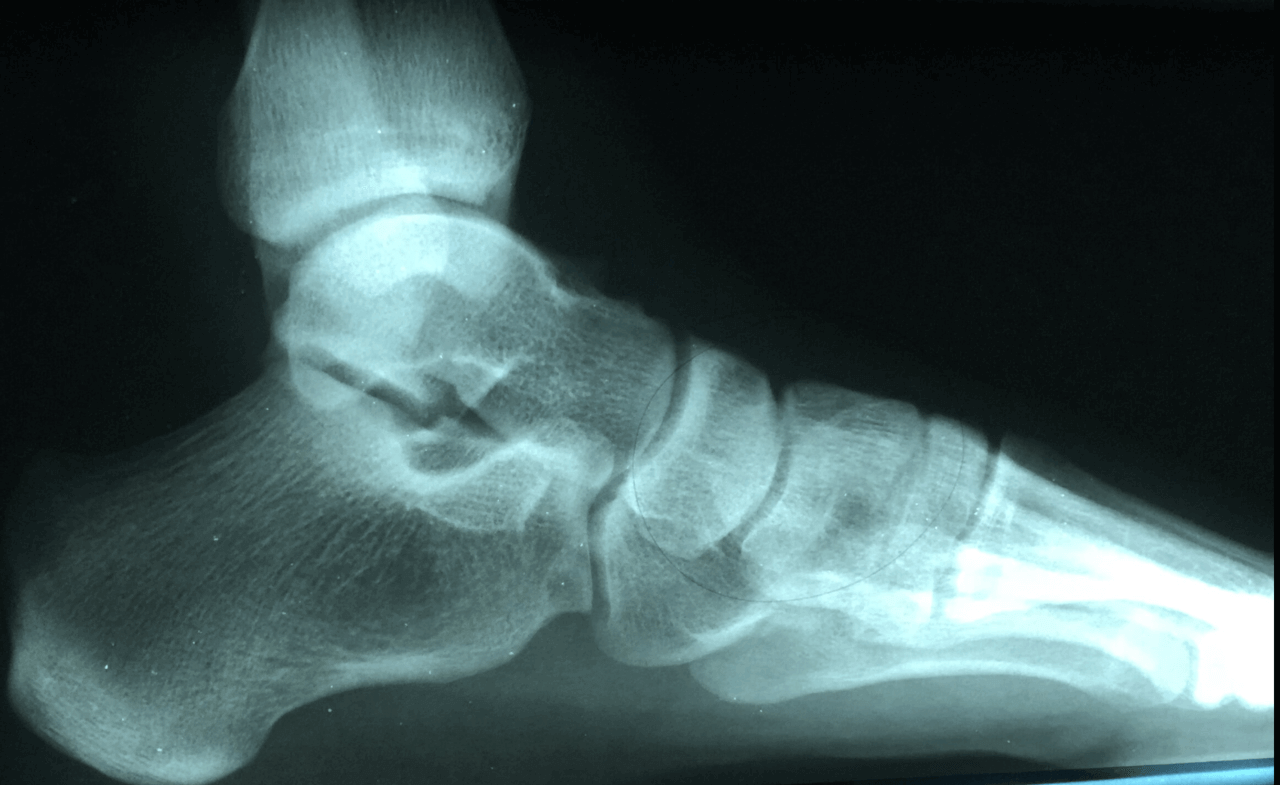plantar fasciitis issaquah
Displaying items by tag: plantar fasciitis issaquah
Dr Brandon Nelson, A Board Certified Physician & Surgeon, Issaquah’s Best Podiatrist, Discusses Heel Pain

Heel pain can affect people of all ages, lifestyles and activity levels. You can be an avid exerciser, a home body or just spend all day working on your feet. I will discuss some of the causes of heel pain, the symptoms and when to seek medical attention. I have been a practicing podiatrist in Issaquah for over 25 years and have treated and helped 1000’s of patients.
There are many common causes of heel pain. However a few are the most common and these include; plantar fasciitis, Achilles tendonitis, stress fractures and Baxter’s neuritis.
Plantar fasciitis is caused from an inflammation of a band of tissue running on the bottom of the foot. The job of the fascia is to support the arch of the foot and control 3 dimensional movement. It often occurs with repetitive stress like standing all day or running.
Achilles tendonitis is usually located more towards the back of the heel. The Achilles tendon helps to push off the foot during the gait cycle. Often any activity that increases load like jumping rope can cause the Achilles to become inflamed. People often feel swelling or a thickening of this tendon in the ankle.
Stress fractures are usually related to overtraining and time. They occur with repetitive loading of a bone. The bone I am speaking of in this case is the calcaneus. These can be tricky to diagnose.
Baxter’s neuritis is rare but is often confused for plantar fasciitis. There is usually more of a burning or tingling that occurs. Often there is not an increase in activities and no correlation with time spent on your feet and pain.
I recommend seeking early treatment for heel pain. I see that patients that wait longer have a harder time recovering and often need more therapeutic interventions. This is especially true for athletes, get in early and get a head of the pathology.
If you have heel pain and would like an appointment with Issaquah’s top Podiatrist at 425-391-8666 or make an appointment online.
Sincerely,
Board Certified Foot & Ankle Surgeon
Dr Timothy Young reviews Shockwave Therapy: The Ultimate Solution for Stubborn Plantar Fasciitis

Dr Timothy Young reviews Shockwave Therapy: The Ultimate Solution for Stubborn Plantar Fasciitis
Introduction
Plantar fasciitis is a painful and persistent condition that can severely impact one's quality of life. Characterized by intense heel pain, especially during the first steps in the morning or after prolonged periods of rest, it's a condition that affects millions of people worldwide. While there are various treatment options available, shockwave therapy has emerged as a leading choice for those struggling with stubborn plantar fasciitis. In this blog, we'll explore why shockwave therapy is often considered the best treatment for this challenging ailment.
Understanding the Frustration of Stubborn Plantar Fasciitis
Plantar fasciitis occurs when the plantar fascia, a thick band of tissue that runs along the bottom of the foot, becomes inflamed or damaged. This condition can be particularly frustrating because it often resists traditional treatments, such as rest, ice, and stretching exercises. When conservative measures fail to provide relief, individuals may face ongoing pain, reduced mobility, and decreased quality of life.
Why is Shockwave Therapy the Best Option for Stubborn Plantar Fasciitis?
Non-Invasive and Minimally Disruptive: Unlike surgical options, shockwave therapy is a non-invasive procedure. Patients can undergo treatment without the need for incisions, anesthesia, or a lengthy recovery period. This makes it an attractive option for those looking to avoid the risks and downtime associated with surgery.
High Success Rates: Numerous studies and clinical trials have demonstrated the effectiveness of shockwave therapy for stubborn plantar fasciitis. Many patients experience significant pain reduction and improved function after a series of shockwave sessions.
Stimulates Natural Healing: Shockwave therapy works by delivering high-energy shockwaves to the affected area. These shockwaves create microtrauma within the damaged tissue, stimulating the body's natural healing response. This process promotes tissue regeneration and reduces inflammation.
Quick and Convenient: A typical shockwave therapy session lasts only 15-20 minutes, and most patients can resume their daily activities immediately afterward. The procedure is typically performed in an outpatient setting, making it a convenient option for those with busy schedules.
Addresses the Root Cause: Unlike some treatments that merely mask the pain, shockwave therapy targets the root cause of plantar fasciitis. By promoting healing and reducing inflammation, it offers long-term relief rather than just temporary pain management.
Minimal Side Effects: The side effects of shockwave therapy are generally mild and short-lived. Some patients may experience temporary soreness or bruising at the treatment site, but these effects are typically minor compared to the potential benefits.
Reduced Reliance on Medications: Shockwave therapy can often reduce the need for pain medications, which can have side effects and long-term risks. This is particularly important for individuals seeking to avoid the potential downsides of pharmaceutical interventions.
Conclusion
Stubborn plantar fasciitis can be an incredibly frustrating and painful condition, but there is hope. Shockwave therapy has emerged as a highly effective and non-invasive treatment option, offering relief and improved quality of life for those who have struggled for far too long. If you've been dealing with the relentless discomfort of plantar fasciitis, consult with a healthcare professional to discuss whether shockwave therapy is a suitable treatment for you. While no treatment is guaranteed to work for everyone, shockwave therapy has proven to be a game-changer for many individuals, providing the opportunity to regain their mobility and enjoy life without the constant burden of pain. Please contact our clinic to see if this treatment is right for you. Give us a call at 425-391-8666 or make an appointment online.
Dr. Brandon Nelson, A Board Certified Physician & Surgeon, Discusses Heel Pain That Will Not Go Away

The most common cause of heel pain continues to be plantar fasciitis. This is usually caused by a foot structure that puts too much pressure on the fascia or tight muscle groups. The majority of plantar fasciitis will go away with physician care and patients will return to normal activities. However, there are a few patients that their heel pain does not get better and need additional treatment.
If you are one of these patients it is important to see a physician that specializes in heel pain. There can be a few diagnoses that need to be considered for anyone that has recalcitrant heel pain. These can range from nerve to bone issues and a careful work up is warranted. Our practice has been home to the Washington Heel Pain Center for years. We were actually the first heel pain center in Washington State and then saw many other offices try to follow suit. However, our physician group finds heel pain fascinating and we diligently scour the latest research to remain up to date on causes and treatment options.
If you suffer from heel pain and have seen other doctors we can help. Or maybe heel pain is new for you and you want the best care we can help. We provide the best care and have the quickest options to get you back exercising or keep you exercising. Make an appointment today and we can help. Give us a call at 425-391-8666 or make an appointment online today.
Sincerely,
Dr. Brandon Nelson Discusses the Most Effective Long Term Treatment Techniques To Get Rid Of Heel Pain & Plantar Fasciitis For Good

Recent literature has proven that about 10%-20 of American adults will experience heel pain. Heel pain whether it is causes by plantar fasciitis, bursitis or a stress fracture can be challenging to treat. With constant use the foot and ankle rarely have time to recover from the constant pressures of walking. This can make heel pain and plantar fasciitis very difficult for many people.
If you are experiencing pain in the bottom of your foot, especially in the morning it could be plantar fasciitis. Often times patients will describe a bruised type feeling or tightness that loosens up with walking but returns at the end of the day. Some people will feel a numbness or tingling in the foot or even a burning. It is important to have a foot and ankle physician evaluate your foot before initiating treatment.
Treatment for heel pain focuses on finding the underlying causes. The majority of people with heel pain have a tight calf muscle. One of the best long term strategies is to begin a calf stretching program. I like to have my patients stretch 3 times a day and spend a couple minutes on the muscles of the calf. Another great option at home is to ice and rest.
Our clinic Issaquah Foot & Ankle Specialists has one of the most advanced protocols that is based on current research to fix heel pain permanently. The majority of patients we see have a greater than 50% reduction in symptoms in less than 1 week and a long term success rate of almost 98%. We focus on the underlying process that is creating the inflammation and help the body to recover and repair the heel pain. Our methods do not require and period of non-weight bearing and have treated thousands of patients. If you are suffering from heel pain call us at 425-391-8666 or make an appointment online today.
Dr. Brandon Nelson Discusses Home Remedies For Heel Pain and Plantar Fasciitis

There is always a lot of discussion about what patients can do at home to help with plantar fasciitis. There are a couple simple instructions that can be helpful for heel pain or plantar fasciitis. One of the most important concepts is icing. Plantar fasciitis is an inflammatory disorder that is directly related to increased pressures on the heel and/or tight calf muscles. Icing can be extremely beneficial for the inflammatory component of this pain. I recommend icing at least 10 minutes a day and most patients will find this extremely beneficial. Icing actually decreases the blood supply to the fascia which helps decrease the inflammatory cascade.
However, decreasing the blood supply to the fascia can delay the healing process so it is essential to have any pain in the foot or ankle evaluated by a podiatrist. The majority of heel pain is caused from plantar fasciitis and before starting any treatment it is important to know the cause. Another treatment option I can be performed at home that patients find it extremely beneficial is calf stretching. It is important to stretch both the gastroc and the soleus muscles so one must perform stretching with both the knee extended the knee flexed. The majority of plantar fasciitis is extremely amenable with conservative measures. If you suffer from chronic heel pain or pain in general of the foot or ankle, please give us a call and we’ll get you back on the road to recovery.
Dr. Brandon Nelson Discusses Understanding Plantar Fasciitis

Heel pain, plantar fasciitis or heel spurs can be extremely painful and uncomfortable for patients. A large percentage of the patient population we see at our clinic is for heel pain. Plantar fasciitis is extremely common as the literature reports as high as 60% of American adults will experience it at some point. The most common symptoms associated with heel pain are pain in the morning or a bruise throbbing type sensation in the heel. Often times patients come and wonder what caused the plantar fasciitis. Plantar fasciitis often originates with increased activity levels or increased stress on the foot structure.
Your plantar fascia is the main supporting network of the foot and people that have flatfoot for tight calf muscles are often predisposed to developing heel pain. Heel pain often starts slowly and begins to progress with time. The most important thing to understand in treating heel pain is to have it treated early. We find it much easier to get rid of it permanently if patients present earlier in the inflammatory process. The ultimate goal is to prevent it from becoming a chronic injury that can take months to get better. If you’re suffering from heel pain or pain when you get out of bed in the morning or after prolonged periods of walking, please give us a call at 425-391-8666 or make an appointment online and we will help you.
Dr. Brandon Nelson Discusses How To Stop Heel Pain And Plantar Fasciitis Once And For All

I’m still constantly surprised on a daily basis how many people live with chronic heel pain. Plantar fasciitis or heel pain can be so challenging for patients and really be detrimental to their life. I see a lot of patients that have suffered for years and years from heel pain and have seen multiple physicians and are still having pain. I empathize with these patients and understand their frustration as this can really impact their life and the things they want to do. Having suffered from plantar fasciitis and heel pain myself and knowing how it impacted my life, I really enjoyed treating heel pain patients.
I now important it is for me to maintain an active and healthy lifestyle and I really want to provide this for my patients as well. Often times the majority of heel pain gets treated as plantar fasciitis when there are quite a few other pathologies that can cause heel pain. I can’t stress enough compounded is to find the underlying causes of heel pain which allows proper treatment plan to occur. If you suffer from heel pain for plantar fasciitis and are continuing to suffer please make an appointment or give us a call today at 425-391-8666 today and we will help you stop it once and for all.
Dr. Brandon Nelson Discusses Heel Pain Caused From Running

The weather is starting to get nice and all of us are wanting to get outside. I know I have dusted off my running shoes and have began to pound the pavement. I have suffered from heel pain in the past and as I start to run again it can rear its ugly head. I will often be a little sore after my run and it reminds me I need to take care of my feet. I once again start my routine of calf stretching and make sure to ease into my mileage. I will find my pro-stretch and specifically start targeting my plantar fascia. I will search the freezer for my frozen water bottle and start rolling my heels out after my runs. Does all this sound familiar? Heel pain can really derail our exercise routines.
I have found if I stretch and wear my prescriptive orthotics my heel pain is nonexistent. My prescriptive orthotics are specifically designed for running. These are not inserts that are purchased at a shoe store or a running store. These are prescriptive medical devices that can only be made by a foot and ankle physician. I have been running for years and have spent year perfecting my orthotics. I love to pass on this knowledge to other runners that have suffered from heel pain. I even see a lot of runners that just want to prevent injury and wear and tear on their joints and these running orthotics really help your lower extremities. If you are a runner and are ready to take care of yourself give us a call today 425-391-8666 or make an appointment online.
Dr. Brandon Nelson Discusses The Best Taping Techniques For Plantar Fasciitis
By far the most common conditions we treat at our clinic is plantar fasciitis or heel pain. We see both children and adults for this condition. It is very common for people, especially once they get back to exercising. Plantar fasciitis can be quite painful and debilitating. A lot of patients experience pain in the morning or pain after sitting for prolonged periods of time. Often times there are a lot of discussions about home remedies including stretching and icing and taping of the foot.
There are many different techniques to take the foot. One of the best is called a Low-Dye taping. I’m going to demonstrate this on our Youtube channel, which you can view here. In addition I have placed link to our free heel pain book which gives other great techniques to relieve heel pain.
If you are experiencing heel pain, give us a call at 425-391-8666 or make an appointment online today.
How To Heal Plantar Fasciitis
It is the little things! Plantar fasciitis is often an extremely stubborn problem. It often takes a combination of treatments to get this to resolve. Some of the core treatments involve appropriate shoes, prescription orthotics, night splints, icing and other anti-inflammatory treatments. However, sometimes it is surprising how effective it can be to do a little "fine tuning" to the treatment program.
We may have a patient where we have been doing all the right things as mentioned above. And then we question our patient: have you been stretching 4 times a day and the answer is no. And just something like ramping up the stretching to 4 times a day and/or being very consistent with a night splint can make all the difference.
Another example can be wearing the right shoes. Wearing flats or Converse shoes or other shoes that just don't have much structure or support are not helpful for this problem. It is critical to get the shoes that are recommended. For example very good athletic shoes with both a combination of structure and support. This is yet another example where adding this one item while continuing to do everything else, and finally the problem gets better!
If you have heel pain, give us a call at 425-391-8666 or make an appointment online today. Myself, Dr. Timothy Young, or my partner Dr. Brandon Nelson would love to see you.




